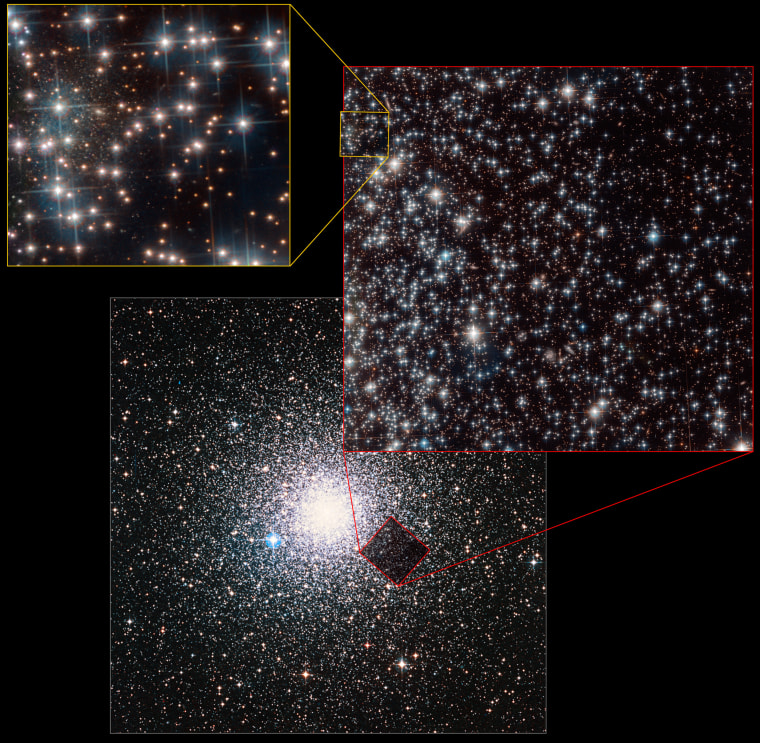Astronomers using the Hubble Space Telescope just made an unexpected discovery: a group of stars thought to be part of our own Milky Way galaxy actually belongs to a previously unknown galaxy that lies 30 million light-years away in an unusually isolated region of space.
The international team was studying a cluster of stars known as NGC 6752, which lies about 13,000 light-years away at the edge of the Milky Way. But after analyzing the brightnesses and temperatures of the stars under observation, the scientists realized they weren't in the cluster at all but were roughly 2,300 times more distant.
"This was a truly serendipitous find," Luigi "Rolly" Bedin, an astronomer at the Astronomical Observatory of Padova in Italy, told NBC News MACH in an email. Bedin is the leader of the team and the lead author of a paper describing the discovery, which was published Thursday in the journal Monthly Notices of the Royal Astronomical Society.

The newfound galaxy, dubbed Bedin 1 in an acknowledgment of the scientist's singular role in its discovery, looks tiny and faint even under Hubble's powerful magnification. And no wonder: It's about 30 times smaller than the Milky Way and a thousand times dimmer.
Unlike the Milky Way, which is a type of spiral galaxy, Bedin 1 is roughly spherical — what astronomers call a dwarf spheroidal galaxy. It's one of 36 such galaxies known to exist in the so-called Local Group of Galaxies, which includes the Milky Way and the neighboring Andromeda Galaxy.
The galaxy is believed to be roughly 13 billion years old, making it a "living fossil from the early universe."
The universe itself is believed to be about 13.8 billion years old.
"It's fun to find something interesting in your backyard that you never knew existed," Jay Pasachoff, an astronomer at Williams College in Williamstown, Massachusetts, who wasn't involved in the new research, told NBC News MACH in an email. "The Hubble Space Telescope's field of view, perhaps that of a grain of rice held at arm's length, is so small that it is rare that an extra object peeks into it, but that is what happened this time."
Such discoveries may not be so rare in the near future. NASA plans to launch its new Wide Field Infrared Survey Telescope , or WFIRST, in the mid-2020s, and Bedin said in the email that the still-in-development space telescope — whose field of view will be 100 times larger than Hubble's — "may find many more of these oddballs."

